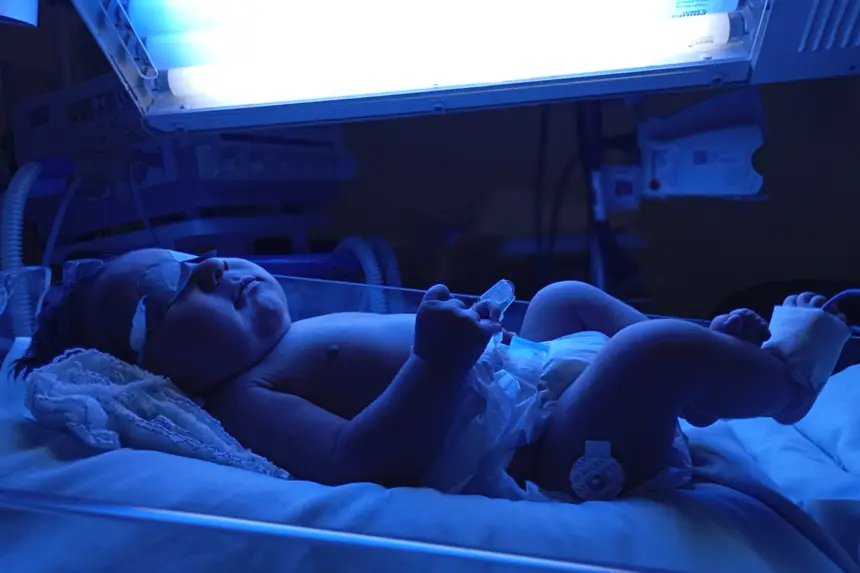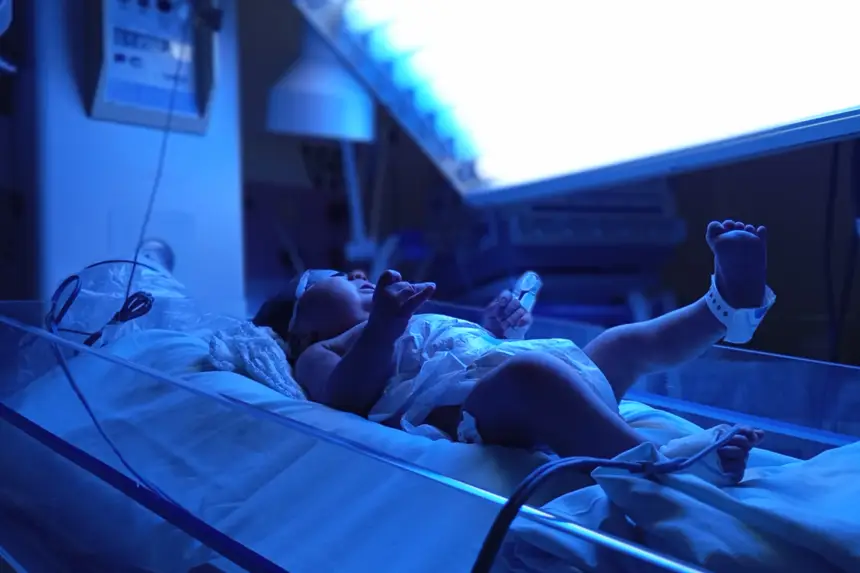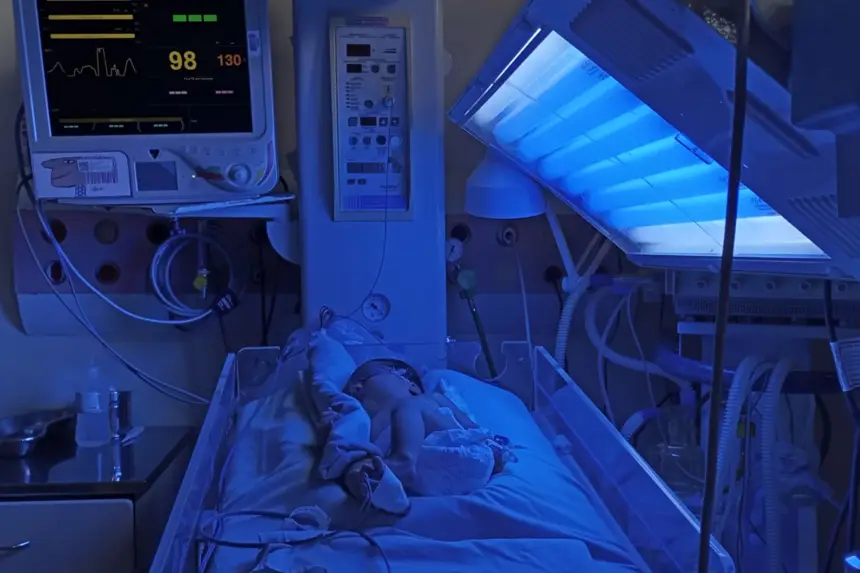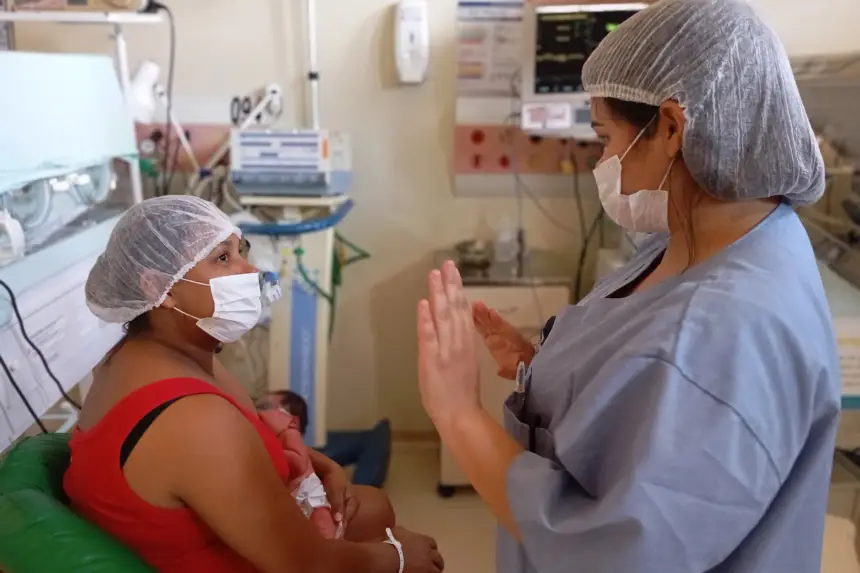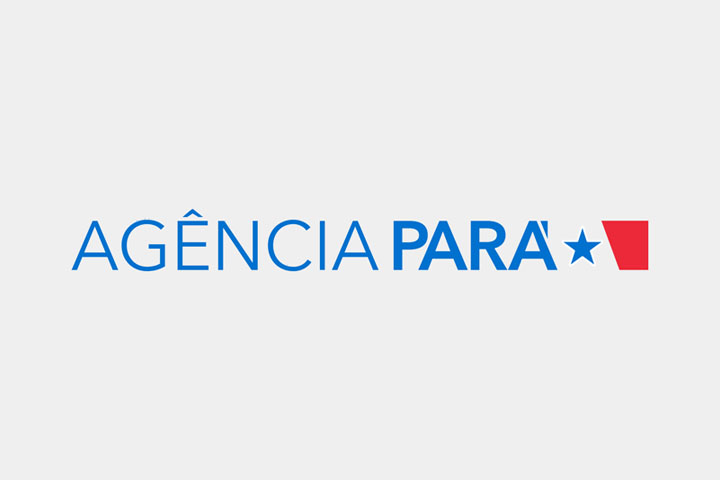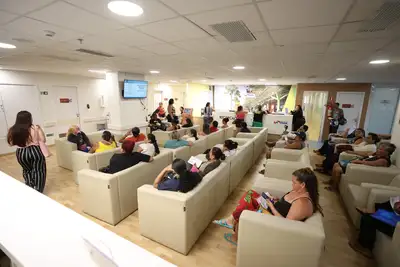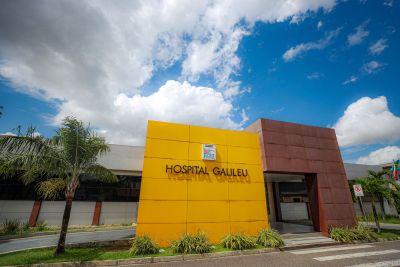How phototherapy, offered at the Transamazon Hospital, helps save newborns
Neonatal ICU treatment aids in liver recovery, affected by prematurity
Dulcielem Rodrigues had just given birth when she was informed by the doctor that her baby would need to be admitted to an Intensive Care Unit (ICU). On the same day, Deivide, the baby, was taken to the Regional Public Hospital of Transamazon (HRPT). The need for ICU is justified by a rather uncommon name for many of us: jaundice. "I had never heard of it, no. When we got here, the doctor explained it to us," says Dulcielem.
Although it is not part of everyday vocabulary, jaundice is a condition that presents itself in most newborns. According to the Ministry of Health (MS), 60% of babies may show yellowed skin, the main indication that something is wrong. When the birth is premature, the chances of developing the condition jump to 80%. There are two types of jaundice: physiological, which is usually benign, and pathological, which can progress to severe cases, as in the case of Deivid, who was admitted to the Transamazon Hospital on Monday, the 11th.
The yellowish tone of the skin signals that the liver needs help, as explained by pediatrician Sebastião Júnior. "The liver works more slowly in newborns and there is difficulty, for example, in absorbing fat." This occurs because there is a significant increase in bilirubin, a substance that plays an important role in digestion, but in large quantities is harmful. One of the treatment methods is phototherapy, which consists of exposing the newborn to light therapy, usually blue or violet.
Phototherapy, offered by the Transamazon Hospital through the SUS, acts as a blocker of bilirubin and reduces the overproduction of the substance. In contact with the skin, the light stimulates the body and helps restore normal functions. About 10 premature newborns undergo HRPT's phototherapy every month.
"Although it is a relatively simple procedure, not using it increases the risks of a severe condition called neonatal jaundice or kernicterus, a condition that, if untreated, can lead to irreversible neurological sequelae, with potential development of cognitive, motor, and sensory sequelae," warns the technical director of the Transamazon Hospital, Leonardo Rodrigues. The main causes are related to blood incompatibility between mother and baby, and congenital liver or gastrointestinal tract alterations.
Bruna Cardoso is one of the nurses in the Neonatal ICU and closely monitors babies like Deivide. She notes that phototherapy goes beyond exposing the child to light. "Babies undergoing phototherapy require extra attention to their eyes and skin. Nursing's main goal is to monitor both the physiological and metabolic processes of the baby to achieve the treatment goal."
The professional emphasizes the importance of the service being available in a neonatal reference unit, such as the Regional Hospital of Transamazon. "We have this and other equipment specifically for the demands of the babies. It is a high demand in our institution, but we are properly equipped." In addition to Altamira, the phototherapy offered by HRPT treats babies with jaundice from eight other municipalities: Anapu, Brasil Novo, Medicilândia, Pacajá, Porto de Moz, Senador José Porfírio, Uruará, and Vitória do Xingu.
Prenatal reduces risks - Jaundice cannot be identified before the baby is born, but medical follow-up during prenatal care reduces risks, as some conditions can indicate complications that, if treated, serve as a form of prevention. If the baby develops the pathological condition at birth, phototherapy is the main source of treatment and prevents serious damage. "If he becomes very yellow and bilirubin levels rise excessively and affect the brain, it is necessary to perform an exchange transfusion, where the baby's blood is replaced."
Prenatal care is a free service for pregnant women and is available throughout the public network of the country, served by the Unified Health System. Ideally, the pregnant woman should start monitoring as soon as she discovers her pregnancy, preferably before the 12th week, to increase the protection of the fetus and identify possible problems, assisting the medical and nursing team in decision-making.
Text: Rômulo D’Castro (HRPT)


